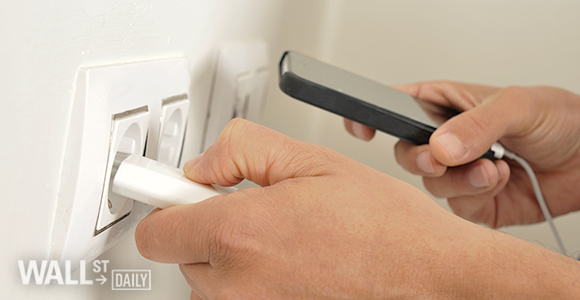
From mobile devices and wristwatches to electric cars… lithium-ion batteries provide the power that keeps our digital society humming.The only thing is… they’re not very efficient. In fact, their energy density is absolutely terrible when compared to just about anything else.

Lithium-Oxygen – the Next-Generation Battery?
While it’s annoying to see the battery power drain from your phone too quickly, it’s far more important that their power lasts longer in other items.Like electric cars, for example.
In order for these vehicles to eventually match the range of gasoline-powered cars, we need something much better. One likely candidate is the lithium-air or lithium-oxygen battery. Why?
So what’s the holdup?
Well, the chemical reactions in lithium-oxygen batteries produce lots of unwanted side-effects. These include rapid degradation when recharged (previous lithium-air batteries failed after just a few dozen recharges) and damage in the presence of water. Not to mention short circuits and explosions.
But a team of scientists at Cambridge University has reached a breakthrough…
British Breakthrough
Led by Clare Grey, the team has developed a working laboratory model of a lithium-oxygen battery that’s 90% efficient, has been recharged 2,000 times with little degradation, and is far more water-tolerant.
If the science holds, it could prove priceless for the electric car industry, as Grey estimates that the battery could store five times as much energy as the lithium-ion batteries currently used by Tesla Motors Inc. (TSLA) and others.
Their work has brought about a new way of thinking in regards to how these batteries are constructed.












Leave A Comment